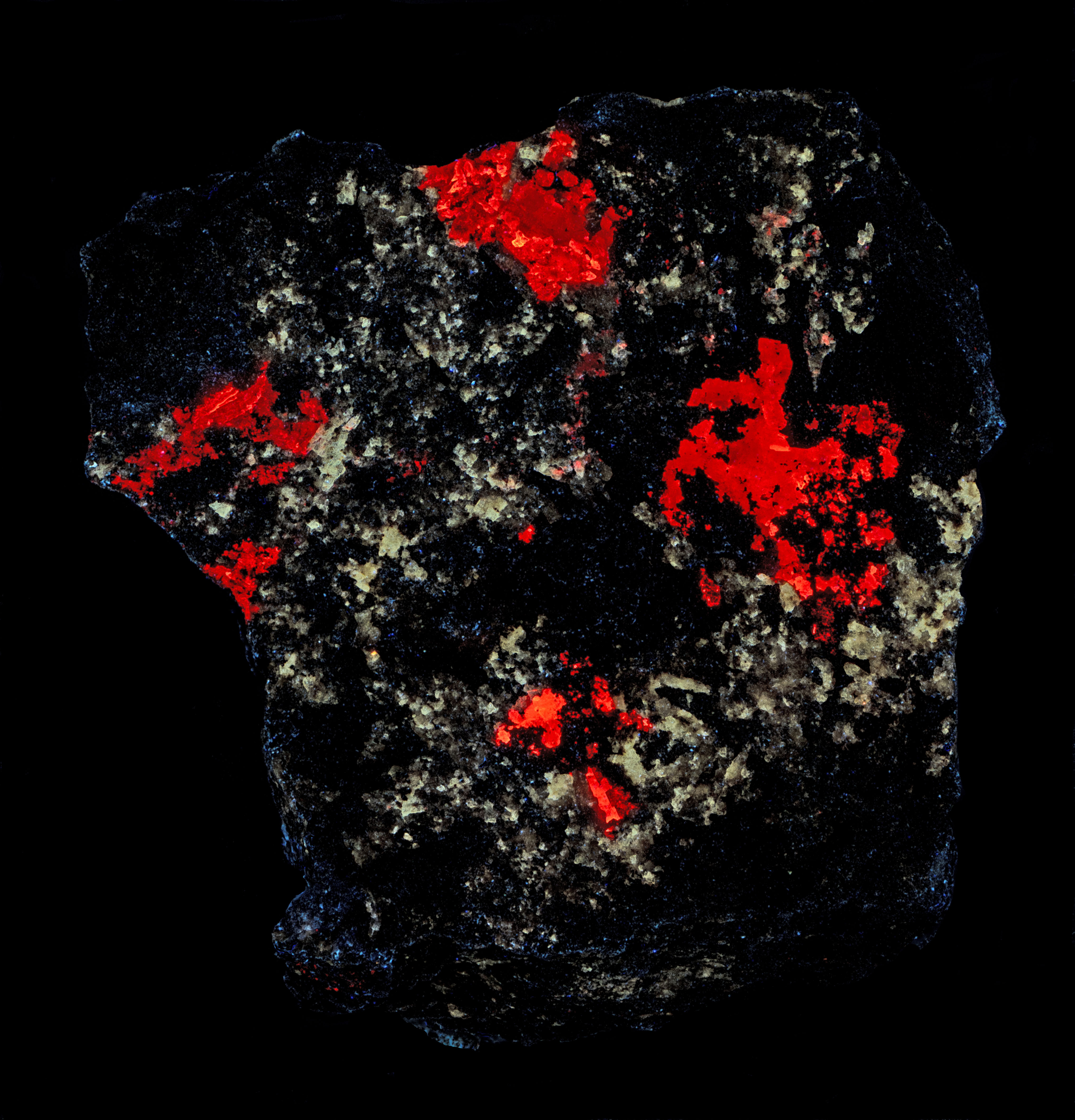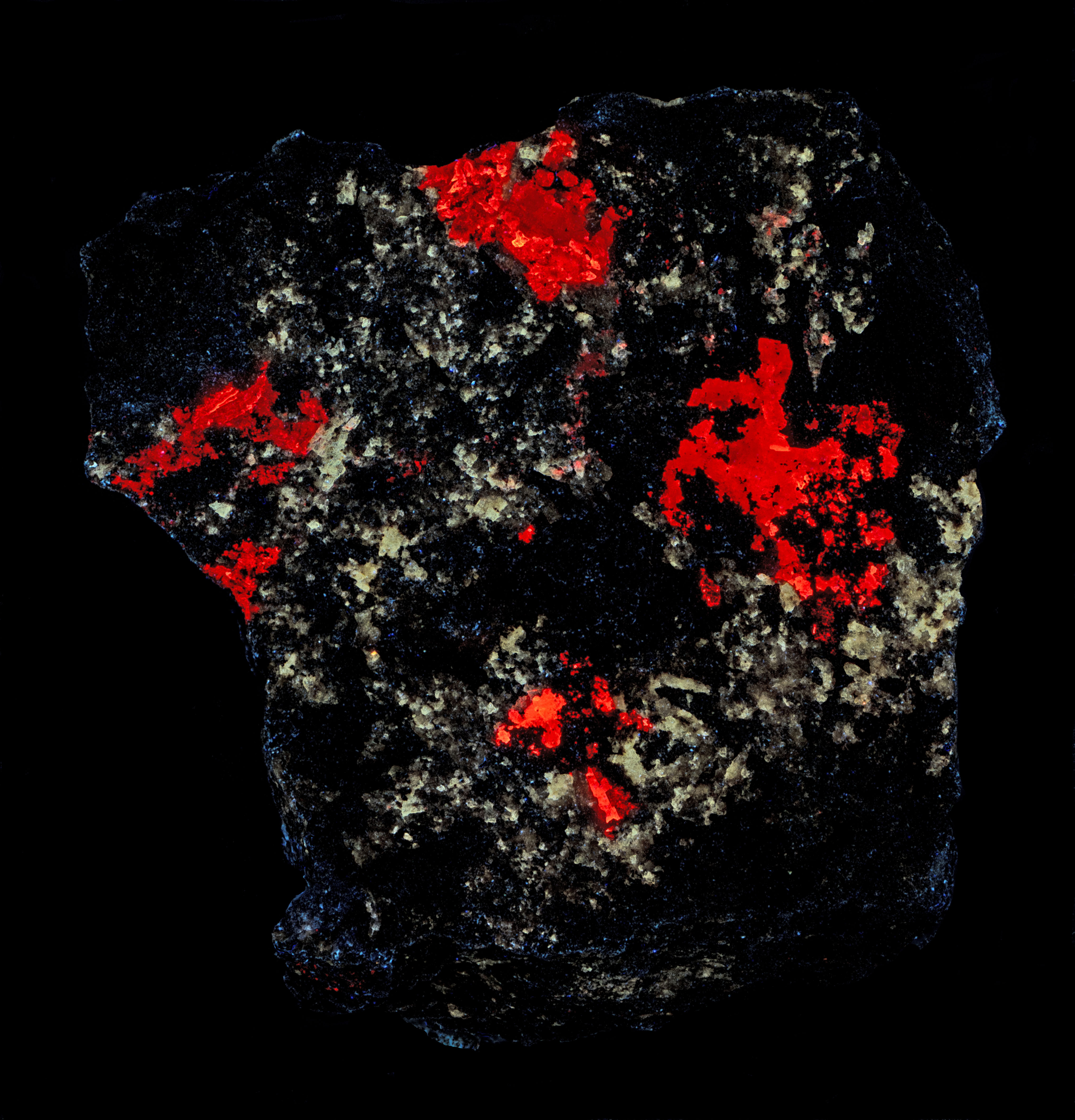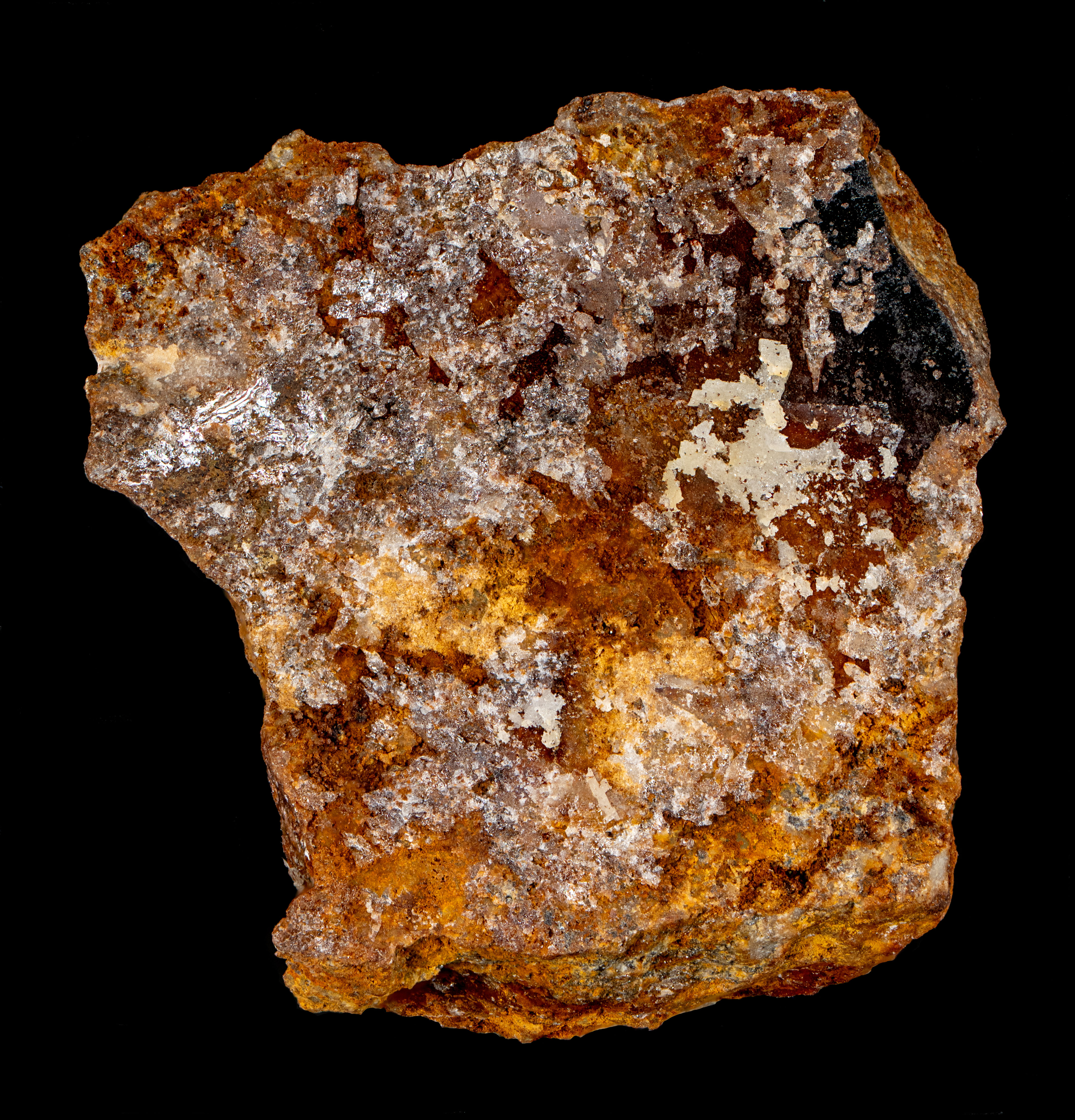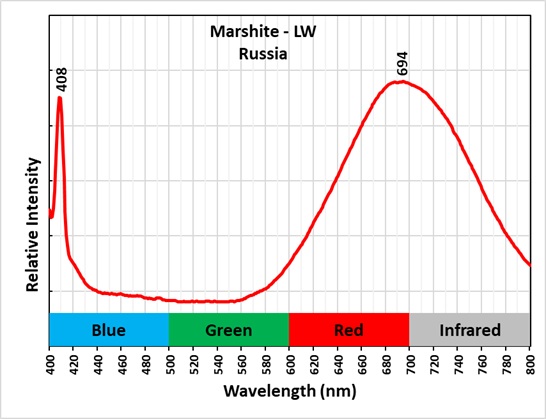Marshite and Cerussite from the Rubtsovsk Mine, Russia
Contributed by: Michael Crawford
Date: Jul 23rd, 2025
Locality: Rubtsovsk Mine, Rubtsovsky District, Altai Krai, Russia (See on Mindat)
Size: 3.5 x 4 cm
Description:
Marshite is an uncommon copper iodide (CuI) mineral. This marshite and cerussite specimen comes from the Rubtsovsk Mine, Altai Krai, Russia. Marshite and cerussite formed in the oxidized zone of a massive sulfide deposit of zinc-lead-copper ores. The marshite fluoresces red and the cerussite has a weak yellowish white fluorescence under longwave UV light.
It is very unusual for a copper mineral to fluoresce. Copper is generally considered a quencher of fluorescence. The activator for marshite’s red fluorescence is unknown. The red fluorescence is brightest under longwave illumination. It also fluoresces under midwave and shortwave UV light. The longwave emission spectrum is unique. It has a sharp violet peak with a maximum at 408 nm and the broad peak in the red region with a maximum at 694 nm.
Summary of luminescence responses:
Marshite (Mindat) (RRUFF)
- Fluorescence under Longwave (365nm LED) UV light: Red
- Fluorescence under Midwave (305nm LED) UV light: Red
- Fluorescence under Shortwave (255nm LED) UV light: Red
- Fluorescence under Longwave (365nm LED) UV light: Yellow




